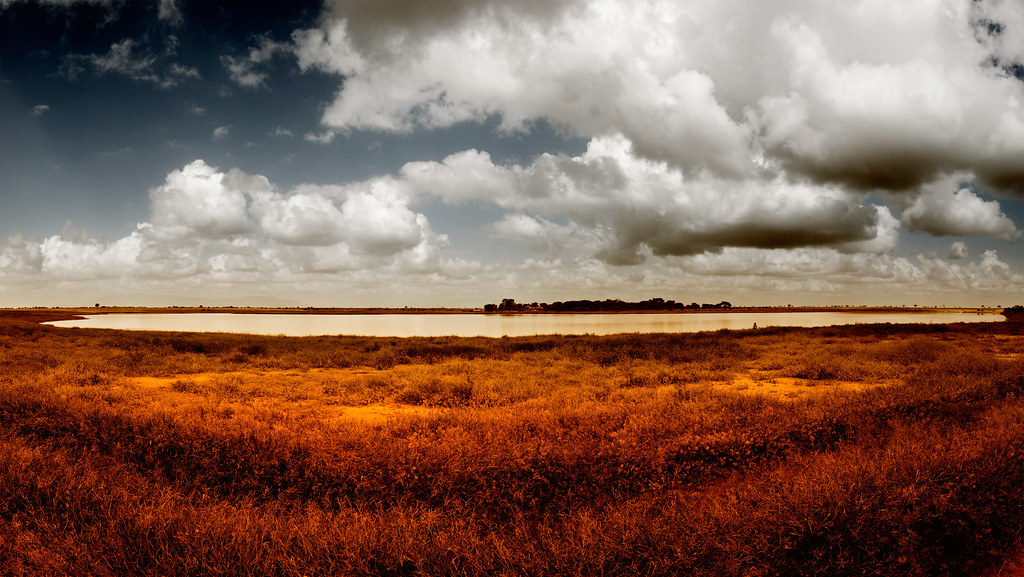Tsavo East vs Tsavo West – A Complete Guide to Kenya’s Twin Safari Parks
In the heart of southeastern Kenya lies Tsavo National Park, one of Africa’s most iconic wilderness areas. Covering over 22,000 square kilometers, it is the country’s largest protected ecosystem — divided into two sections by the Nairobi–Mombasa highway and railway: Tsavo East and Tsavo West. Though they share a name and border, these two parks offer remarkably different safari experiences. Choosing between them depends on whether you’re drawn to raw open wilderness or to scenic, mountainous beauty.
The Character of Tsavo East National Park
Tsavo East National Park is the larger of the two, spanning roughly 13,700 square kilometers. It is a land of vast arid plains, sparse vegetation, and rolling red-dust landscapes, making it one of the most photogenic safari destinations in Kenya. This openness gives visitors wide, uninterrupted views, perfect for spotting animals as they traverse the endless savanna.
The park is famous for its “Red Elephants of Tsavo”, which coat themselves in the park’s iron-rich soil, giving them a distinctive copper glow. It’s also home to large herds of buffaloes, giraffes, zebras, and an impressive population of lions — descendants of the historic man-eaters of Tsavo. Cheetahs are also frequently seen sprinting across the plains, taking advantage of the park’s open terrain.
Among Tsavo East’s most iconic sites is the Galana River, which flows through the park and creates a lifeline for wildlife. Here you’ll find the Lugard Falls, where the river tumbles over sculpted rock formations into a series of rapids, creating a dramatic spectacle. Nearby, the Aruba Dam is a wildlife magnet, especially during the dry season, offering some of the best game-viewing opportunities in the region.
For bird lovers, Tsavo East hosts over 500 recorded bird species, including ostriches, hornbills, kingfishers, and raptors like martial eagles and bateleurs. The park’s wide skies and acacia woodlands make it a haven for photographers who love natural light and minimal human disturbance.
The Beauty of Tsavo West National Park
By contrast, Tsavo West National Park — covering around 9,000 square kilometers — presents a very different character. Here, the landscape changes dramatically from savanna to rugged volcanic hills, dense vegetation, and lush oases. The park’s terrain is more varied and visually captivating, offering a blend of wildlife and geological wonders.
The most famous attraction in Tsavo West is Mzima Springs, a series of crystal-clear pools fed by underground streams from the Chyulu Hills. The springs provide life to hippos, crocodiles, and countless fish species, and there’s even an underwater observation chamber where visitors can view them from below the surface.
Another highlight is the Shetani Lava Flow, a dark, rippled sea of solidified lava stretching across the park. The name “Shetani,” meaning “devil” in Swahili, reflects the local belief that the fiery flow was the work of evil spirits. This landscape gives Tsavo West an otherworldly atmosphere, especially when viewed under the golden light of early morning or sunset.
The Chaimu Crater, a black volcanic cone, offers a panoramic viewpoint for those who enjoy short hikes. It’s a favorite for photographers and adventurers alike, combining scenic drama with wildlife viewing. The park also houses the Ngulia Rhino Sanctuary, a fenced area protecting over 80 endangered black rhinos. Although spotting one requires patience, the sanctuary represents Kenya’s successful conservation efforts.
Wildlife and Safari Experience
Both Tsavo parks are part of the same ecosystem and share a variety of animals, but the viewing experiences differ due to the landscape.
-
In Tsavo East, wildlife is easier to spot because of the open terrain. Expect to see elephants, lions, leopards, buffaloes, giraffes, ostriches, and gazelles with minimal searching.
-
In Tsavo West, the thicker bush makes animal sightings more challenging, but the setting is more diverse. Here, the joy of the safari is in the discovery — finding animals in lush valleys, near springs, or along rugged hillsides. The park also shelters rarer species like the fringe-eared oryx and klipspringer.
The Big Five are present in both parks, though rhino sightings are best in Tsavo West’s Ngulia Sanctuary. Both parks also support a strong birdlife presence, especially around water sources like Mzima Springs and the Galana River.
Accessibility and Best Time to Visit
Tsavo East is easily accessible from Mombasa — only about a 3-hour drive — making it a perfect choice for visitors who want to combine a coastal holiday with a safari. Its proximity to beach resorts at Diani, Malindi, and Watamu makes it a top pick for short or mid-length safaris.
Tsavo West, on the other hand, lies closer to Nairobi, about a 5-hour drive. Many travelers combine Tsavo West with Amboseli National Park, continuing on to the coastal regions or back to the capital.
Both parks are open year-round, but the best time to visit is during the dry seasons (June to October and December to February), when animals congregate around water sources and the roads are easier to navigate.
Accommodation Options
Both parks offer a range of lodges and camps that cater to different budgets.
-
In Tsavo East, you’ll find classic safari lodges such as Voi Safari Lodge and Ashnil Aruba Lodge overlooking waterholes that attract elephants and lions.
-
In Tsavo West, luxury options like Kilaguni Serena Safari Lodge and Severin Safari Camp blend comfort with breathtaking views of the Chyulu Hills and open plains.
There are also several mid-range and budget-friendly camps for travelers seeking a closer connection with the wild. Night sounds — from lions roaring to hyenas laughing — complete the true African bush experience in both parks.
Which Park Is Better?
There’s no definitive answer, but your choice depends on your safari style.
-
Choose Tsavo East if you want vast open spaces, reliable wildlife viewing, and fewer crowds. It’s ideal for those who crave the raw, untouched beauty of Africa.
-
Choose Tsavo West if you prefer diverse landscapes, geological wonders, and a mix of adventure and relaxation in one park.
Many safari itineraries combine both parks for a complete Tsavo experience — starting with Tsavo East’s sweeping savannas and ending in Tsavo West’s volcanic drama and springs.
Final Thoughts
Whether you explore Tsavo East or Tsavo West, both offer unforgettable encounters with nature and wildlife. The Tsavo region remains one of Kenya’s most authentic safari destinations — where elephants roam free, the horizon stretches endlessly, and the pulse of wild Africa still beats strong. Visiting both parks is the best way to appreciate the full spectrum of Kenya’s untamed beauty.





